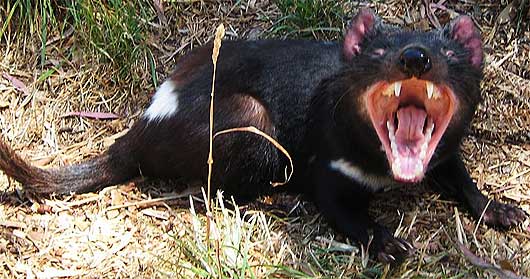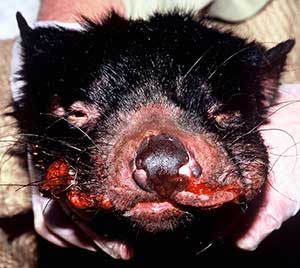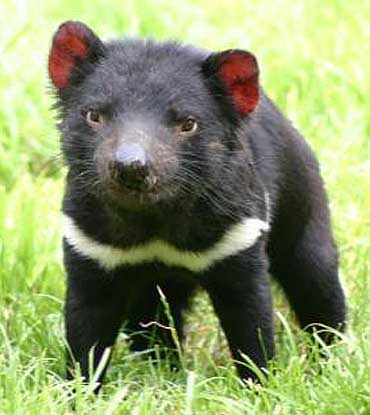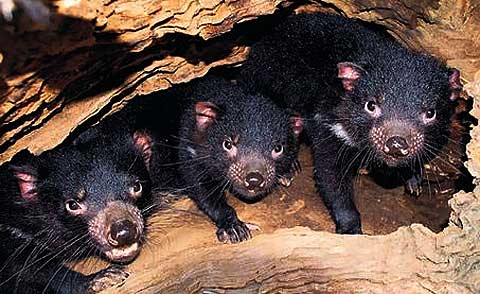Tasmanian Devil – Fierce Marsupial Facing Tough Times

The Tasmanian devil is a carnivorous mammal that is native only to the Australasian island of Tasmania. It is a marsupial and is distantly related to both kangaroos and wombats. Despite being related to both these species this creature looks more like a wild dog. The average male has a body length of up to 26 inches (65 cm) and on average weighs around 13 lb (6 kg).
The devil has coarse black fur and secretes an offensive odour like a skunk when stressed or disturbed. When they feel threatened this species emit a loud screeching cry.

Screeeeech!
The Tasmanian devil has become an endangered species due to the spread of a species specific mutation disease which is likened to cancer. Much of their population in the wild has died out as this mutation disease has killed them off. The species is extremely fierce and vicious but it is still in need of protection and there should be measures in place to try and stop their decline.

tumor causing disease

They are solitary, nocturnal hunters. They feast upon most smaller animals including birds, fish, insects and even road kill. When they discover a carcass, they are renowned for being extremely loud in warning off other scavengers. It’s known as a “devil” because of its death-curdling cry and its vicious, almost psychotic behavior, when it feels threatened. When males are approached by other males, this species display a series of odd behaviours including lunges, teeth-baring and growls. It doesn’t take much to drive this creature into a rage.

As it is nocturnal, it spends its day dozing in caves, burrows and hollows in trees. They use their long whiskers and phenomenal sense of smell to find prey in the dark. They have no natural predators although dingos and other wild dogs have been known to catch and eat juvenile devils.

The female gives birth around three weeks after conception. Each litter contains up to thirty young and they survive by living in their mothers pouch (a feature of the marsupials). They leave their mother’s pouch around 4 months old and are virtually independent by 8 months.
